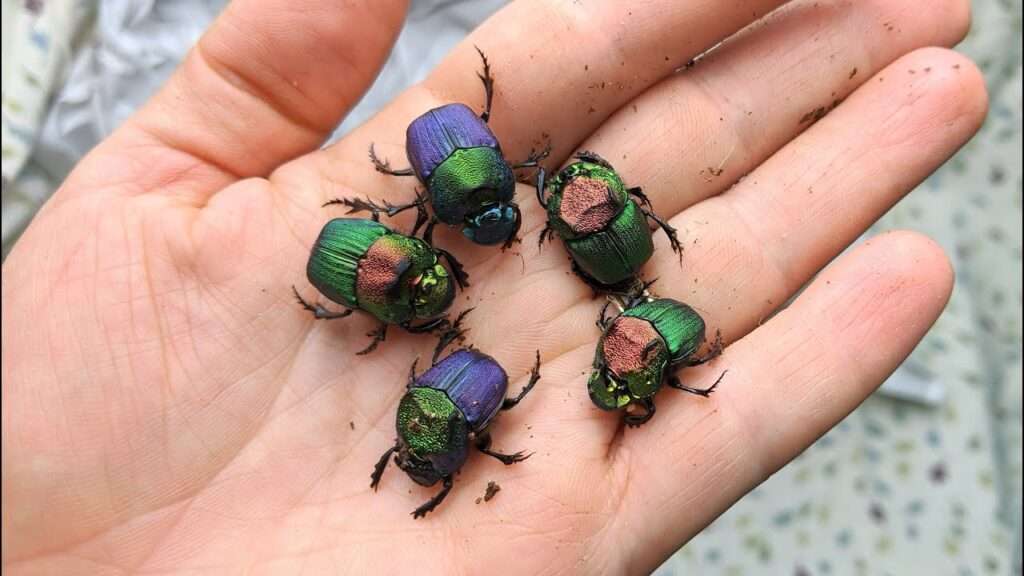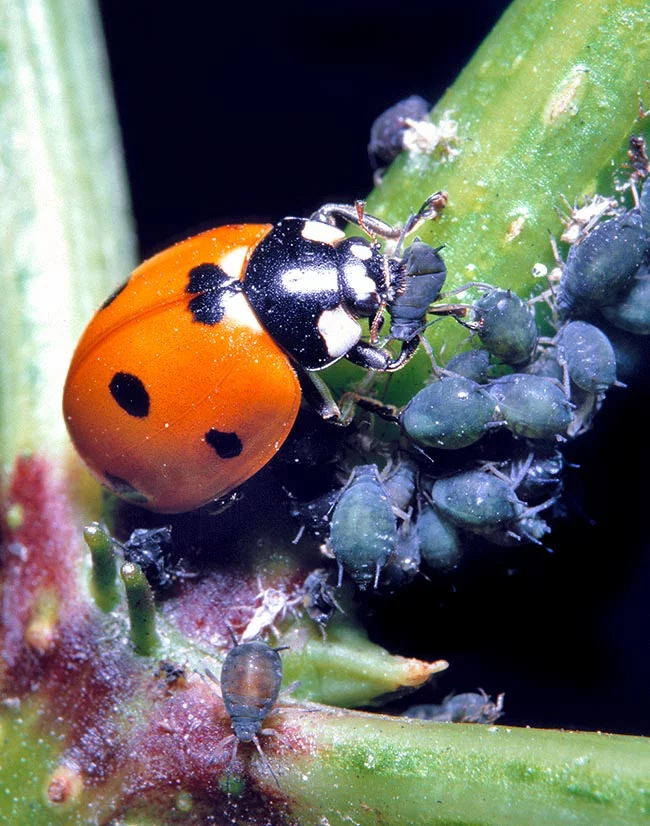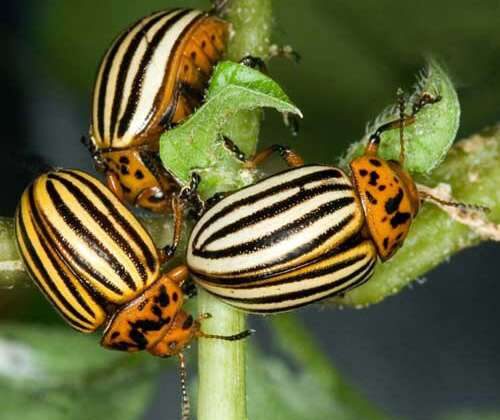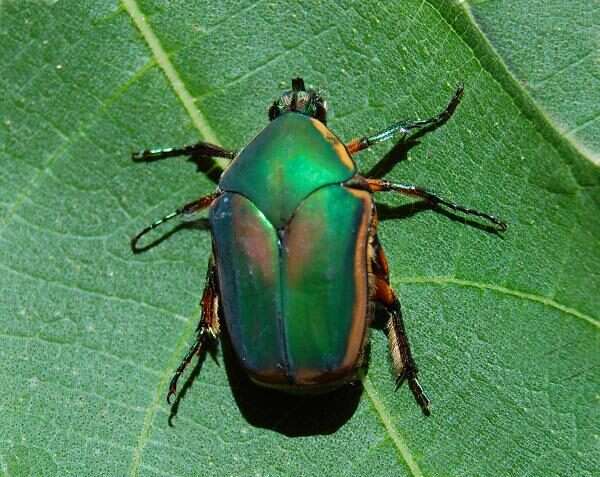
The Phanaeus vindex, is a type of dung beetle of North American that can be found from the eastern US through Mexico and Arizona. The males have a black horn that curls backwards toward the thorax and a metallic yellow colored head. Yellow antennae that may curl up into a ball are seen on the underside of the heads of both sexes. The sides of the thorax are yellow or green, while the body is a lustrous coppery color. The belly is a shiny green color. Green and black color the underbelly. The insects are between 1.2 and 2.2 centimeters long.
In pairs, males and females collaborate to create tunnels beneath animal waste. In the tunnel, where the female puts her eggs there, they transport part of the waste down there. Before pupating, the grubs go through numerous instars of feeding on the faeces.
Description
Larvae
- The larvae resemble grubs and have a recognizable C-shaped body. The body is flexible and the head is hardened.
Adults
- The adults have an oval or elongated form and are hefty. Both males and females are between 1 and 2.2 centimeters length from head to the back of the belly.
- Their antennae are lamellated.
- The enormous horn that protrudes from the dorsal surface of the males’ heads and their metallic appearance make them easy to distinguish from females. Phanaeus igneus, a species that is similar but with a smaller horn, is likewise metallic.
Males
- Although certain Phanaeus vindex males, known as small males, have significantly diminished horns, the gender can be identified by comparing the differences of posterior abdominal segments. The females are devoid of horns.
- The pronotum (thorax) of the male has a plate-like dorsal surface, and its posterior ends are pointy and somewhat elevated above the elytra.
Females
- In contrast, the pronotum of females is not elevated over the elytra. Both the elytra and pronotum are colored differently in males and females. The pronotum typically has red and shiny copper coloring. Typically, the elytra are shiny green in color.
Diet
The following types of animal dung have been demonstrated to be preferred by diet dung beetles in general: dog, swine, cow, horse, opossum and raccoon. The opossum and swine faeces stood out as being especially appealing. Additionally, Phanaeus vindex has a high predilection for human faeces.

Lifespan
Adults live for 3 to 6 months.
Habitat
Forest pasture fields and other places where they can find enough manure to survive
Importance
Dung beetle infestations in people are uncommon. In Sri Lanka, it has been noted that a different species of dung beetle infests humans. Ingestion of the larvae is the most common method of dung beetle infestation, but the likelihood of oviposition through the anus is low. Dung beetles have mistakenly infected people in the past; one such instance involved 186 boy scouts in Pennsylvania in 1957. The boy scouts were sleeping when the insects entered their ears. The insects’ hind tibial spines caused bleeding, but no subsequent infections were noted.
Dung beetles play a crucial role in minimizing vertebrate waste buildup, especially in ruminants. This was dramatized in Australia, where marsupials and no ruminants were found before the Europeans settled the land. When numerous species of dung beetles that specialize in bovine dung were introduced to the Australian continent, it helped to alleviate the dilemma caused by the accumulating waste of the introduced ruminants.
Care as Pet
Temperature and Humidity
High temperatures and moderate to low humidity are ideal for the Rainbow Dung Beetle’s habitation in North American grasslands. The ideal conditions for housing them are 70°F to 77°F and 40–60% humidity. Additionally, keep the tank out of direct sunlight to maintain the RDB’s comfort and avoid food odors.
Substrate
Substrate Dung Beetles must dig deep burrows, particularly while attempting to reproduce. As a result, the substrate in the cage needs to be at least six to eight inches thick. The best substrate for them is made up of a blend of organic compost, dirt, sand, and coconut fiber.
Tank
Large tanks are not necessary for Rainbow Scarabs to feel comfortable. As long as the tank has adequate space for the substrate, proper ventilation that prevents the beetles from escaping, and a safety lock on the lid, you can keep multiple RDBs in it.
Since they don’t spend much time at the surface, the substrate can take up the majority of the tank’s space; decorations are therefore nice but not necessary.
Large tanks are not necessary for Rainbow Scarabs to feel comfortable. As long as the tank has adequate space for the substrate, proper ventilation that prevents the beetles from escaping, and a safety lock on the lid, you can keep multiple RDBs in it.
Since they don’t spend much time at the surface, the substrate can take up the majority of the tank’s space; decorations are therefore nice but not necessary.
Table





